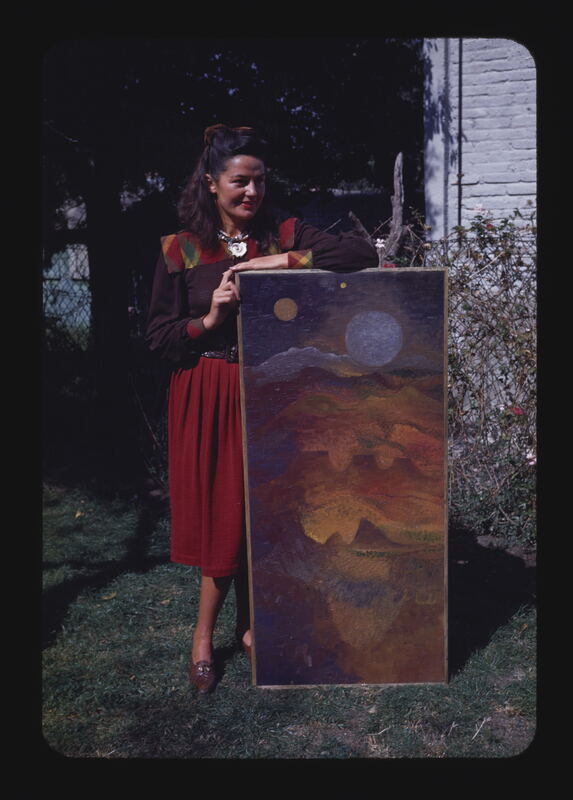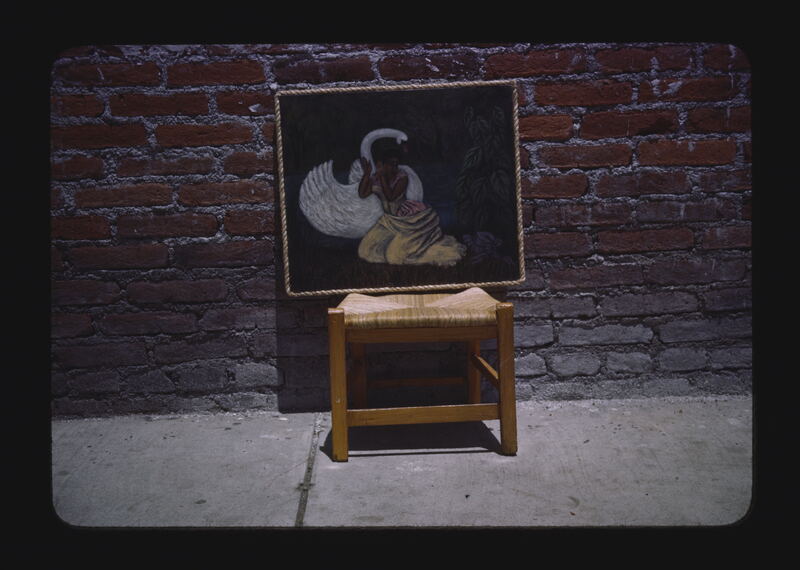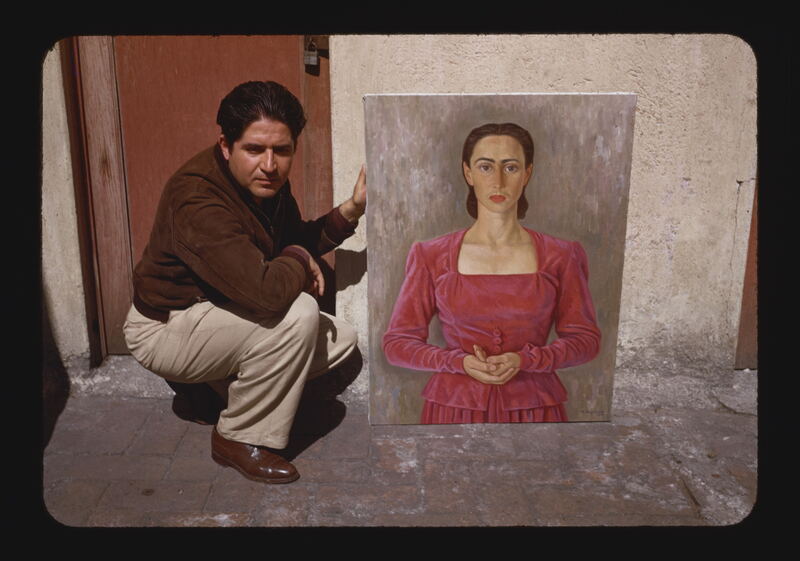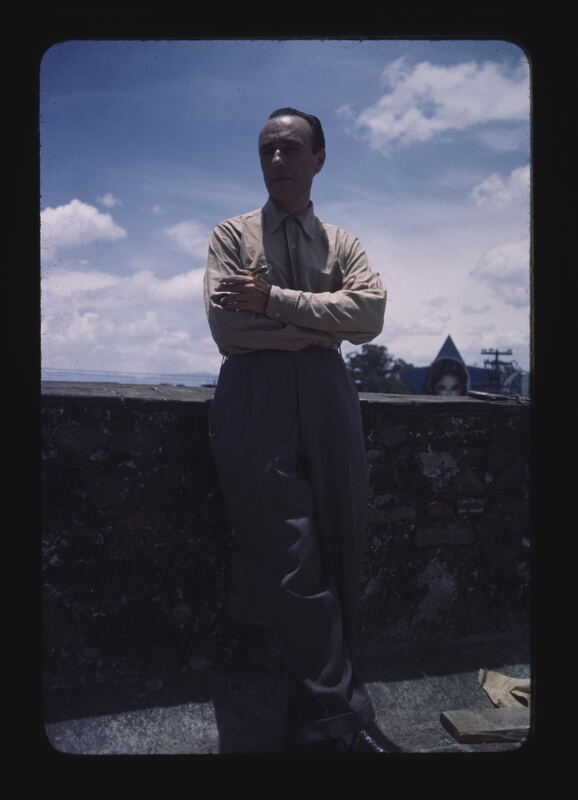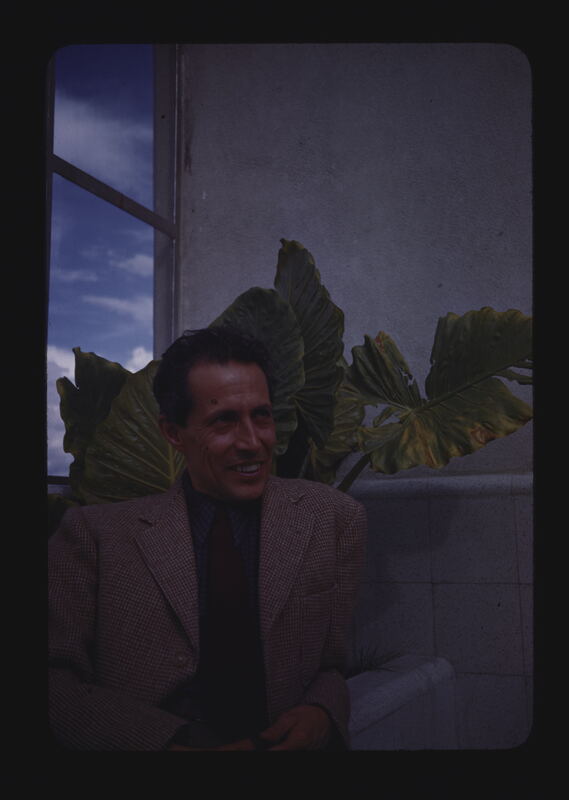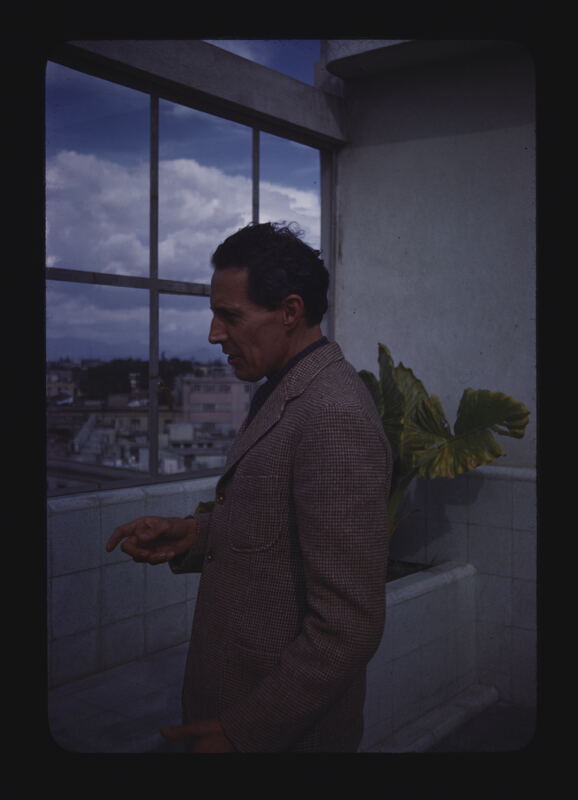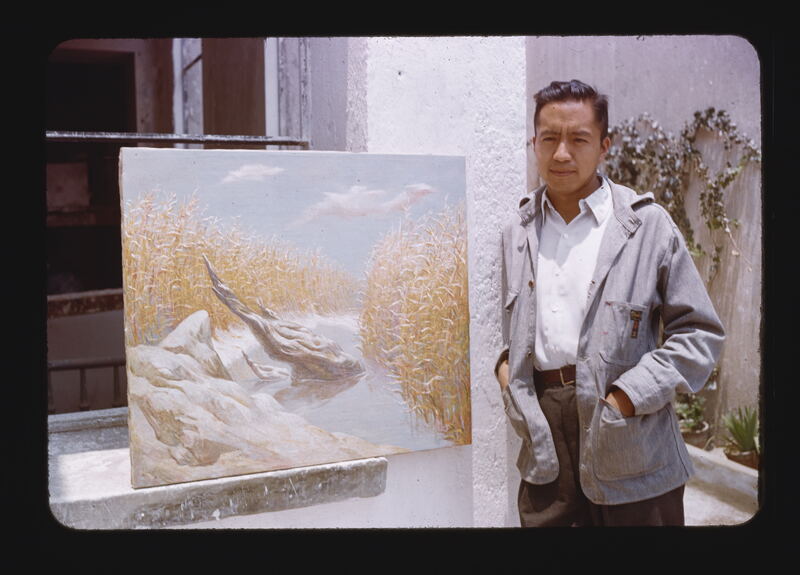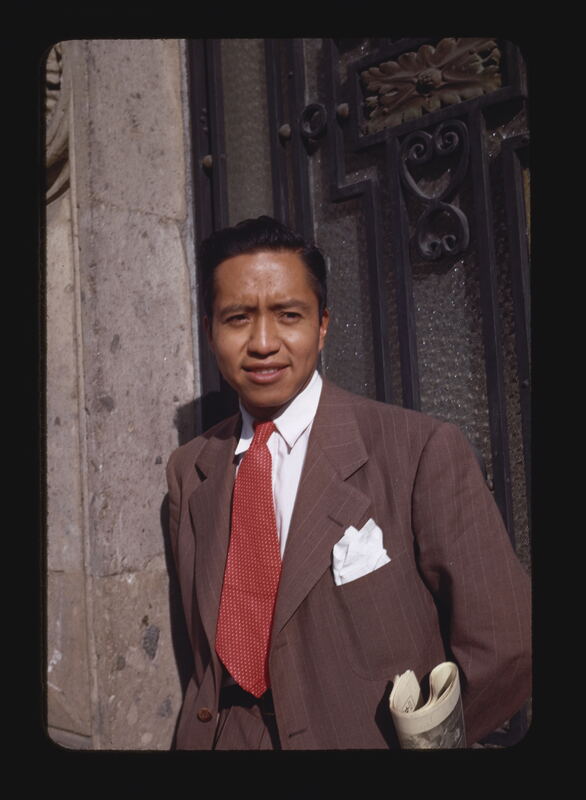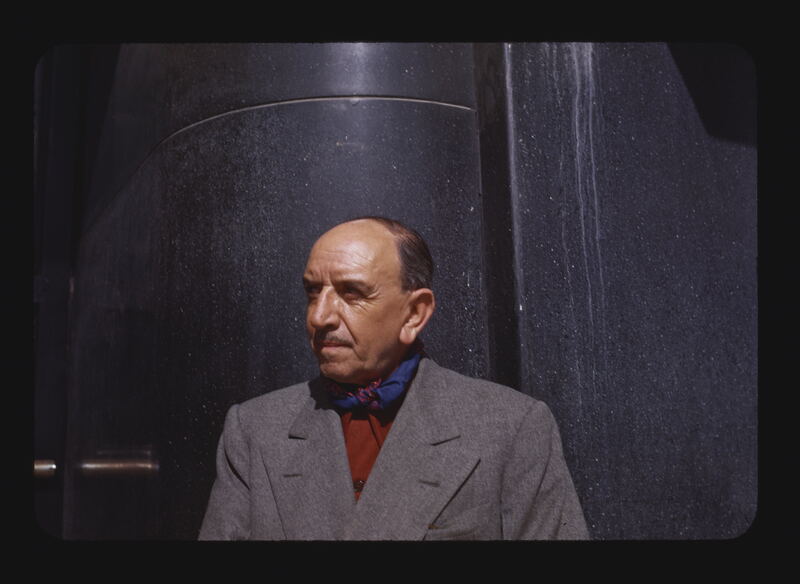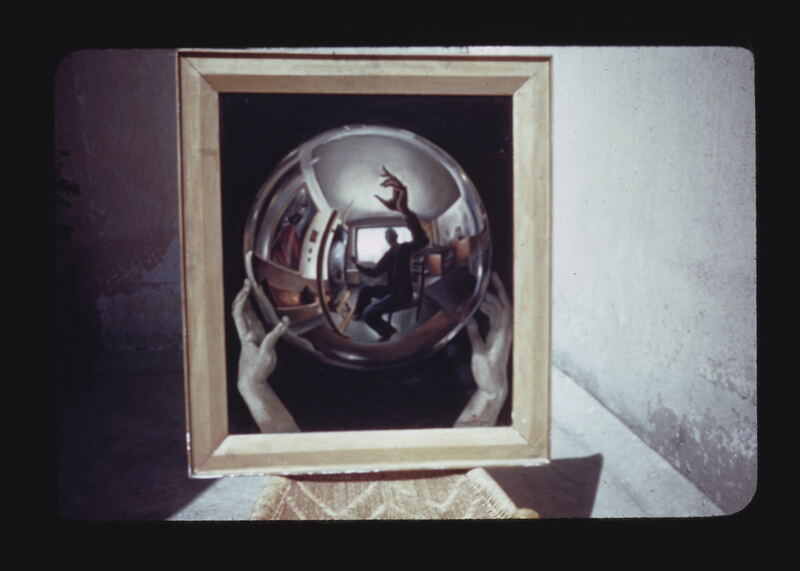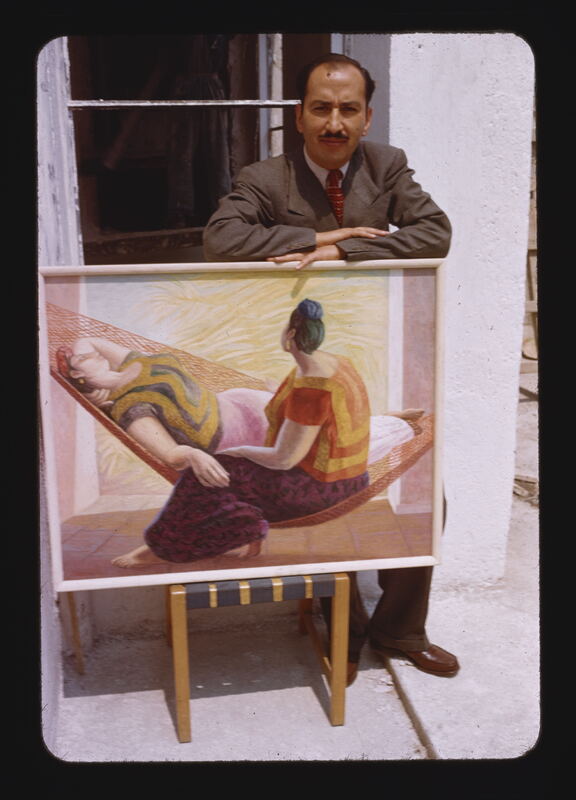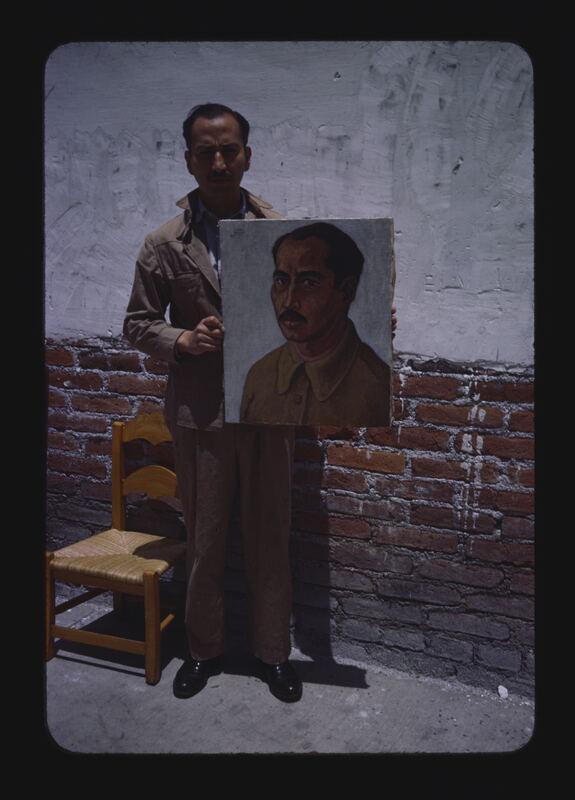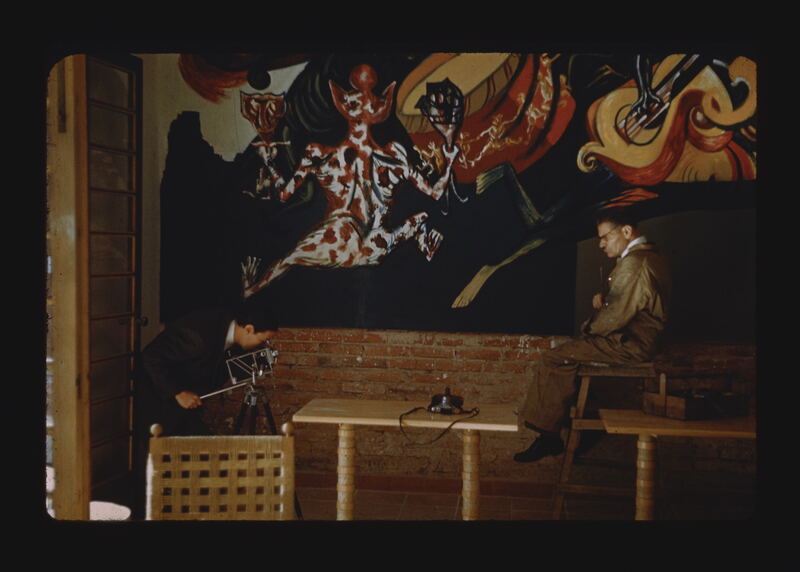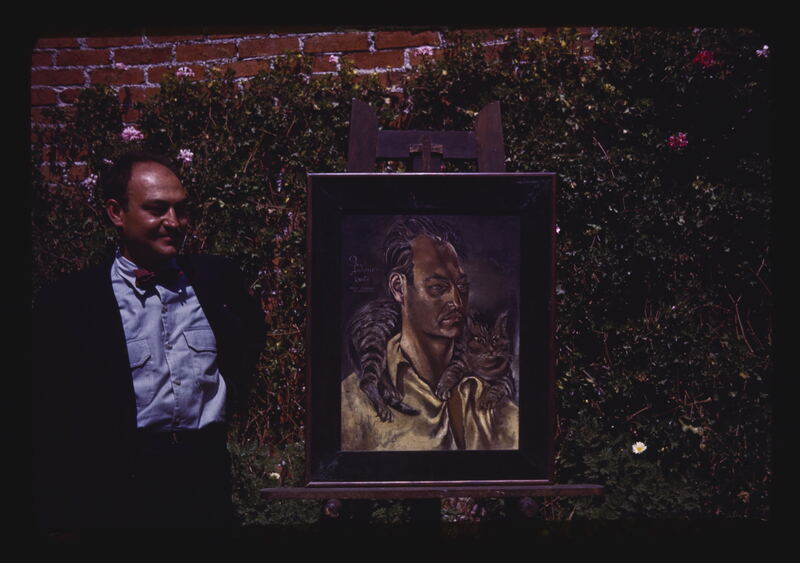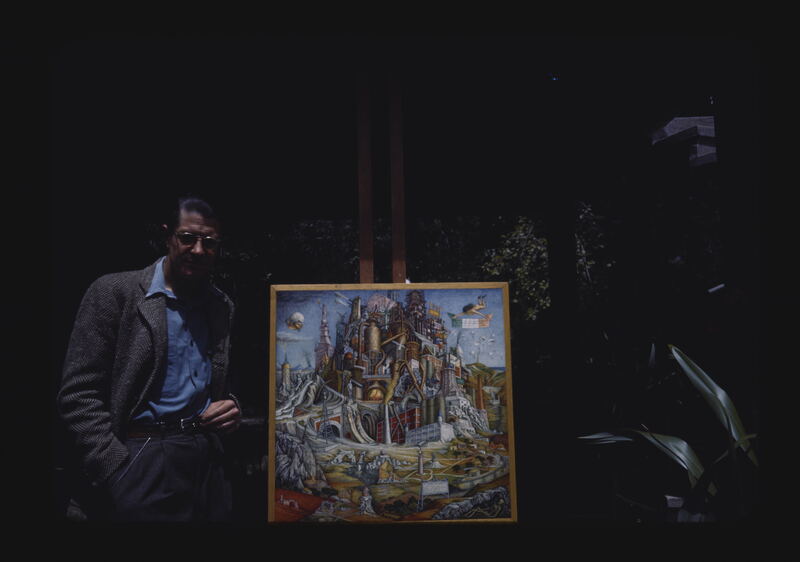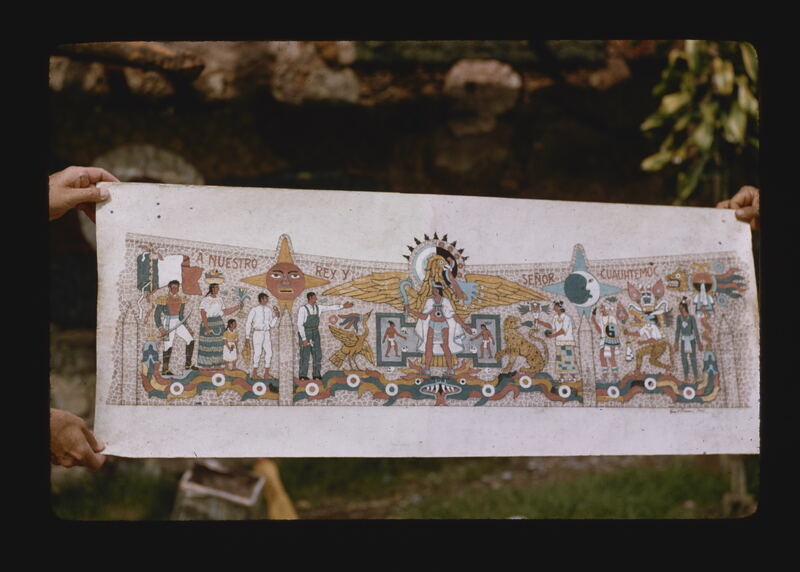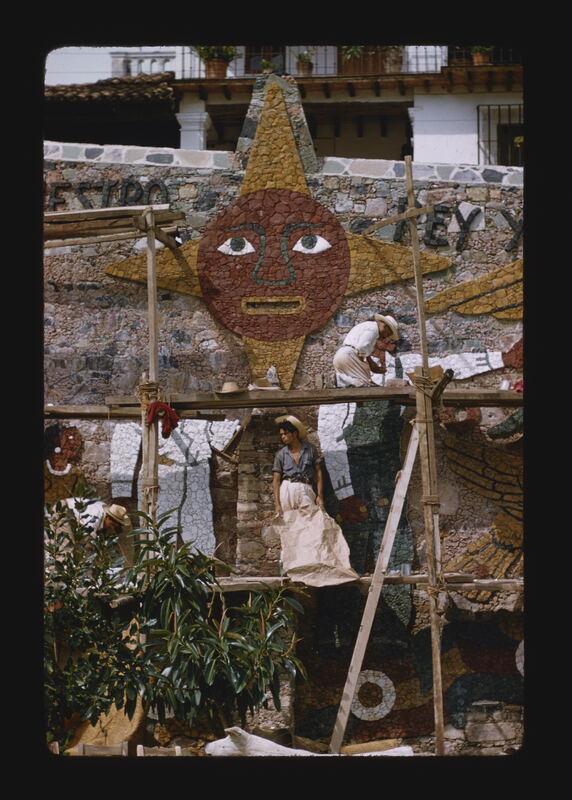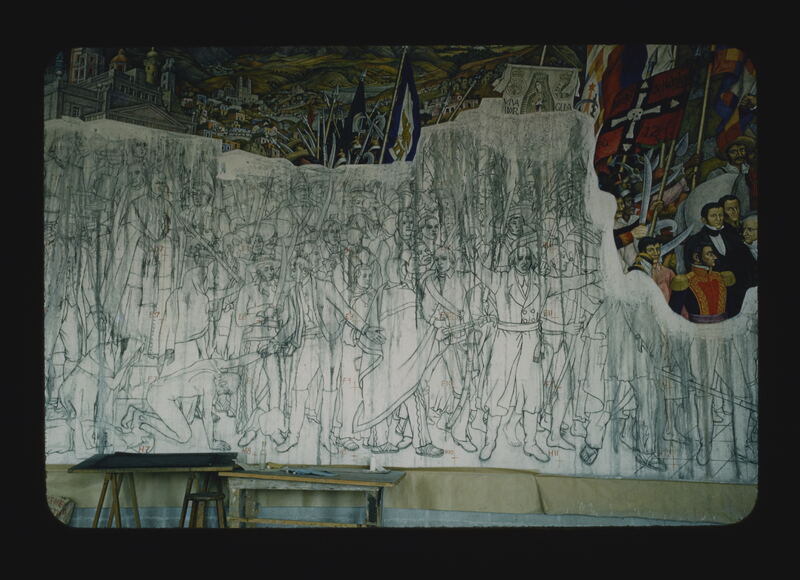Arquin and the Modern Mexican Painters
In addition to being employed by the State Department, Florence Arquin was also an artist and a scholar. In 1943, Arquin had a solo exhibition in Mexico City and the catalog for that show contained a forward by Diego Rivera. By this point, Arquin seems to have been already well integrated into the art scene in Mexico City. Her letters home to her husband describe the kind of familiarity she had with the leading artists of the Modern Mexican Painters. She talks about going to Wolfgang Paalen’s house for lunch and seeing his new work, dropping into María Asúnsolo’s Gallery, meeting Juan O’Gorman at an opening at Ines Amor’s gallery, visiting Diego Rivera and Frida Kahlo at home. She even mentions, on a trip in 1942, that she socialized quite a bit with Marc Chagall, who was in town preparing the Aleko Ballet. If there were any slides made of her time with Chagall, the unfortunately do not survive.
Arquin’s photos of Frida Kahlo at home are among the most famous ever taken of the artist. Her images of other Modern Mexican painters deserve similar recognition. Taken during trips in 1943, 1947, and 1957, the images below show both portraits of artists and documentation of works in progress. Her portraits are both sensitive and familiar, documenting them both as public figures and as friends. Her images of the works of art both in progress or finished, but still in the studio, have a wonderfully casual character to them. In many cases, she has dragged them out of the studio (or perhaps out of a gallery), propped them up on a chair or against a tree, and snapped a photograph. She also captured murals that are in progress, including Juan O’Gorman’s mosaic at the Posada de la Mision hotel and his painting in the Chapultepec Castle.
Born in Vienna, Austria, Wolfgang Paalen moved to Mexico with his then-wife Alice Rahon in 1939. Arquin mentions in a letter home to her husband (1947) that she had lunch with Paalen, took photos of his work, and didn’t leave his house until 7pm. Paalen apparently also presented her with a painting of his that she had admired. These photos might date from that meeting.
Alice Rahon was born in France and met Wolfgang Paalen in Paris in 1931. They moved to Mexico together. These photos of Alice Rahon probably do not date to the same luncheon with Paalen above. They were divorced by this point. It seems that the painting that Rahon is holding in this picture is still in progress. The celestial bodies – perhaps moons? – have been moved in the final version.
Jesús Reyes Ferreira, also known as Chucho Reyes, this artist was self-taught and only really began his professional career as a painter at the age of 58. His work was often painted on unusual surfaces, such as cardboard, and focused on a narrow range of subjects, including horses, circus performers, and chickens.
Olga Costa emigrated from Germany with her family when she was 12. They left to escape persecution. Politically active and preferring to paint Mexican Nationalist content, Carlos Merida dubbed her the “white angel of Mexican painting.”
Raúl Anguiano is considered part of the second generation of Mexican muralists, coming after Rivera and Orozco. He is best known for his images of indigenous Mexicans and the rural Mexico.
Manuel Rodríguez Lozano’s work is singular among the artists of his generation. He was not predominantly a muralist and his work was not overtly political – unlike Rivera and Orozco, for example. Instead, his work is striking for its emotional content, particularly his white paintings.
Carlos Merida was a Guatemalan artist with close ties to avant-garde movements around the world, including those in Mexico City. He was friendly with Diego Rivera, for example, and completed several murals in Mexico during his career.
Guillermo Meza was represented by the dealer Ines Amor on the recommendation of Diego Rivera. His work is known for its social commentary and surreal elements.
Roberto Montenegro was a part of the Mexican Muralist movement and of the same generation as Diego Rivera. Although he completed some murals, he also worked in illustration and portrait painting.
Married to Olga Costa, José Chávez Morado was largely self-taught. Like his wife, he was committed to left-wing political causes and subject matter.
Originally from New York, Nancarrow moved to Mexico in the mid-1930s. She worked with and knew many of the most prominent artists of the day, including Orozco and Frida Kahlo.
Juan O’Gorman introduced Arquin to José Clemente Orozco on her trip to Mexico in 1942. Her letters mention going to see his work in progress. He was and remains one of the most famous artists to come from the Mexican Muralist movement.
Painting in a style that was more academic than that of his contemporaries, Federico Heraclio Cantú Garza was nevertheless a muralist of the same generation as Rivera. He is the only one of the muralists of his generation to use classical and religious themes and symbols.
Arquin’s relationship with Juan O’Gorman seems to have been quite close. He and his wife, Helen, feature prominently in her letters. At one point, O’Gorman asked Arquin to help him arrange an exhibition at a gallery, at another moment, he introduced her to José Clemente Orozco. The number of slides in this section attests to their close relationship and the fact that they saw each other many times over the years. There are more images of his work in progress in her slides than any other artist.
These images show the mosaic work at the Posada la Mision hotel as it was being completed. The decoration for the pool was commissioned in 1955, so these images probably date from Arquin's trip to Mexico in 1957.
These images show O'Gorman at work on his paintings in the Chapultepec Castle.


